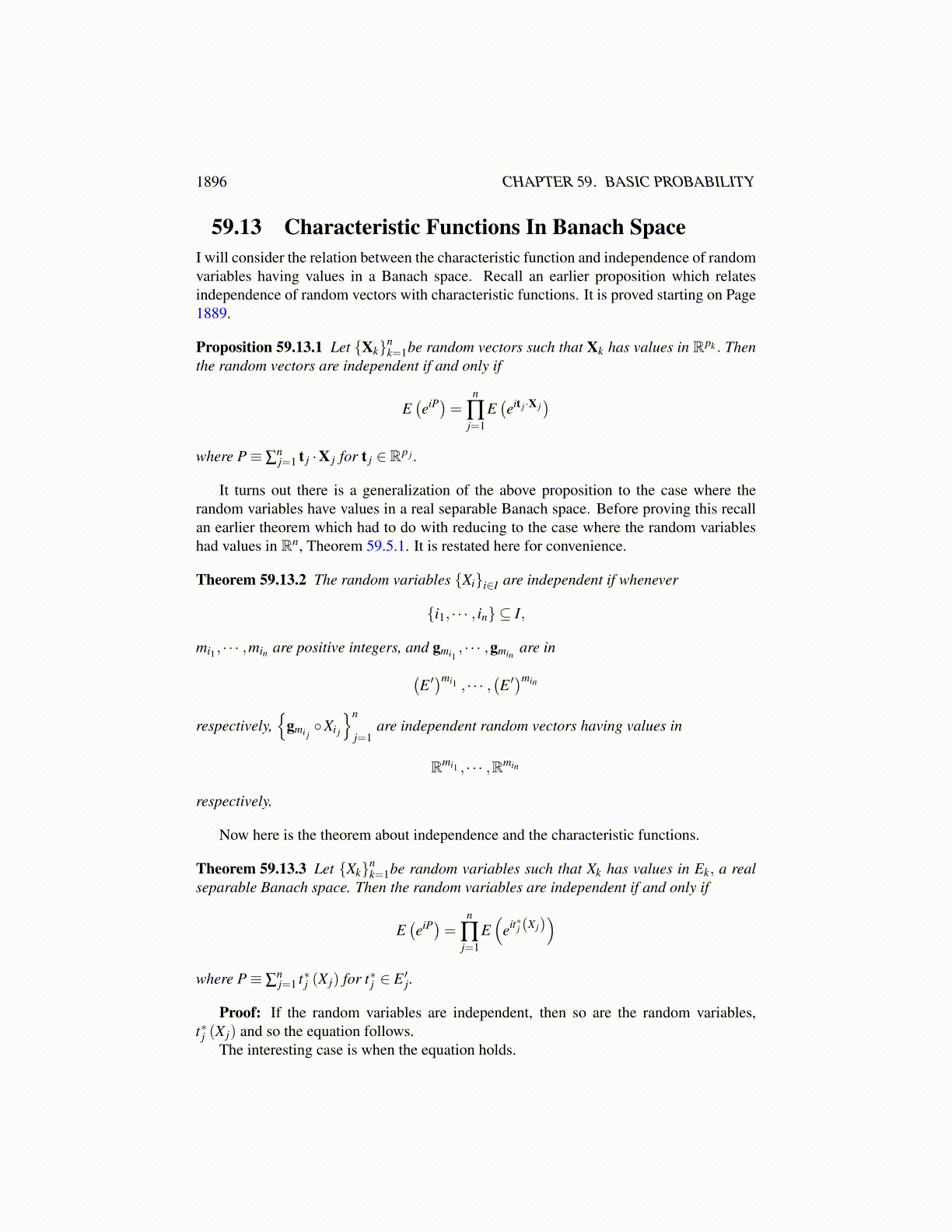
1896 CHAPTER 59. BASIC PROBABILITY
Theorem 59.12.4 Let X and Y be random vectors with values in Rp and suppose E(eit·X)
= E(eit·Y) for all t ∈ Rp. Then λ X = λ Y.
I want to do something similar for random variables which have values in a separablereal Banach space, E instead of Rp.
Corollary 59.12.5 Let K be a π system of subsets of Ω and suppose two probability mea-sures, µ and ν defined on σ (K ) are equal on K . Then µ = ν .
Proof: This follows from the Lemma 12.12.3 on Page 329. Let
G ≡{E ∈ σ (K ) : µ (E) = ν (E)}
Then K ⊆ G , since µ and ν are both probability measures, it follows that if E ∈ G , thenso is EC. Since these are measures, if {Ai} is a sequence of disjoint sets from G then
µ (∪∞i=1Ai) = ∑
iµ (Ai) = ∑
iν (Ai) = ν (∪∞
i=1A)
and so from Lemma 12.12.3, G = σ (K ) .Next recall the following fundamental lemma used to prove Pettis’ theorem. It is proved
on Page 645 but is stated here for convenience.
Lemma 59.12.6 If E is a separable Banach space with B′ the closed unit ball in E ′, thenthere exists a sequence { fn}∞
n=1 ≡ D′ ⊆ B′ with the property that for every x ∈ E,
||x||= supf∈D′| f (x)|
Definition 59.12.7 Let E be a separable real Banach space. A cylindrical set is one whichis of the form
{x ∈ E : x∗i (x) ∈ Γi, i = 1,2, · · · ,m}
where here x∗i ∈ E ′ and Γi is a Borel set in R.
It is obvious that /0 is a cylindrical set and that the intersection of two cylindrical setsis another cylindrical set. Thus the cylindrical sets form a π system. What is the smallestσ algebra containing the cylindrical sets? It is the Borel sets of E. This is a special caseof Lemma 59.4.2. Recall why this was. Letting { fn}∞
n=1 = D′ be the sequence of Lemma59.12.6 it follows that
{x ∈ E : ||x−a|| ≤ δ}
=
{x ∈ E : sup
f∈D′| f (x−a)| ≤ δ
}
=
{x ∈ E : sup
f∈D′| f (x)− f (a)| ≤ δ
}= ∩∞
n=1
{x ∈ E : fn (x) ∈ B( fn (a) ,δ )
}